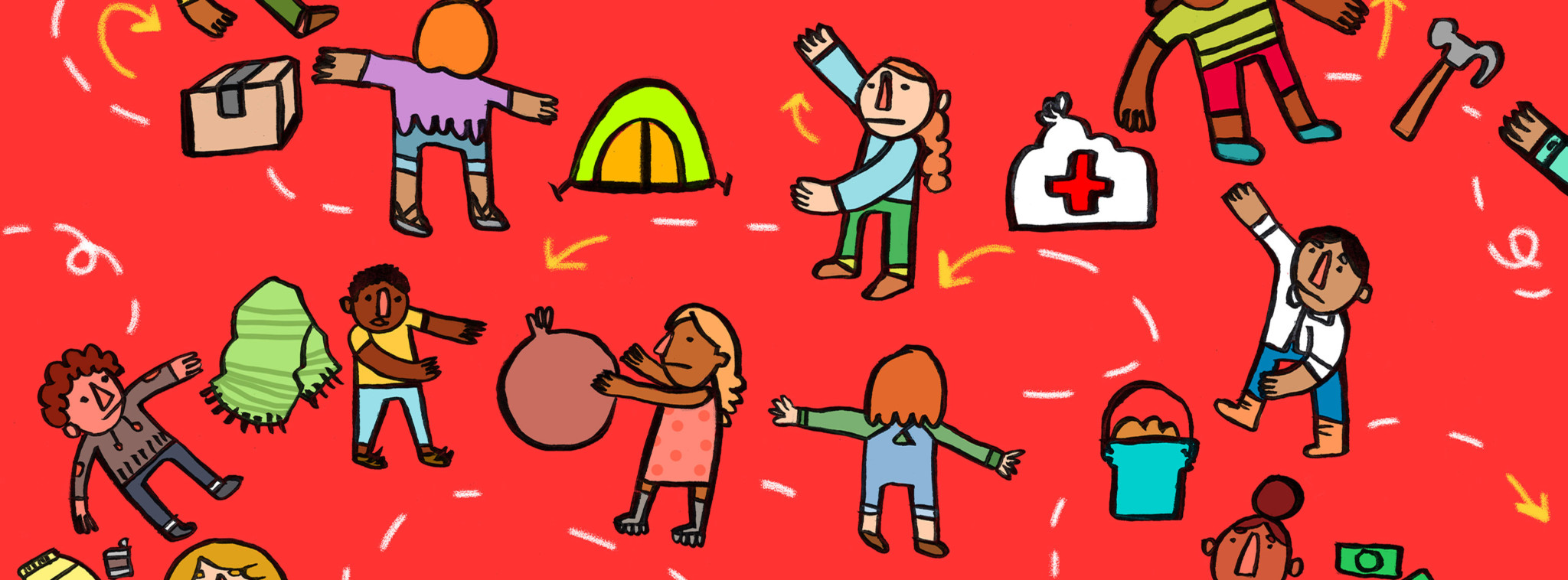Chicago may sit more than 2,000 miles away from San Juan and over 1,500 miles from the U.S.-Mexico border, but the connections between Chicago, Puerto Rico, and Mexico run far deeper than geography would suggest. The city is bound to these regions by the heritage of over one million of its residents—there are over 900,000 people of Mexican descent and over 100,000 people of Puerto Rican descent living in Cook County—and by neighborhoods such as Pilsen, Little Village, and Humboldt Park that form Chicago’s ethnic and cultural mosaic.
When natural disasters struck Mexico and Puerto Rico this fall, the suffering they brought to millions of Mexicans and Puerto Ricans impacted Chicago too. In the days, weeks, and months following the September 19 earthquake that caused widespread devastation in central Mexico and the September 20 landfall of the Category 4 Hurricane Maria, Chicago’s Mexican and Puerto Rican communities mobilized in force to send supplies, donations, and volunteers to aid the people of Mexico and Puerto Rico and pressured local government leaders to ensure that resources were devoted to helping those affected. Such efforts—taking place from the grassroots level to the centers of power in City Hall and Capitol Hill—serve as a powerful display of solidarity with the victims of the natural disasters by Chicago’s greater Latinx community. Where the U.S. federal government response has been inhumanely insufficient in providing disaster relief, in a city fighting to live up to its pro-immigrant reputation, citizens and local officials have risen to the challenge.
As winds of over 150 miles per hour began to batter Puerto Rico, preparations for aiding in recovery efforts were already underway in Chicago, recalls Doug Rivlin, Director of Communications for U.S. Representative Luis Gutiérrez of the 4th District, whose district includes predominantly Puerto Rican and Mexican-American areas of the city. “The Puerto Rican Agenda and leaders of the Puerto Rican community came to Congressman Gutiérrez…and said, ‘How are we going to be able to help? We can gather supplies, but how do we then get them to Puerto Rico once the airports are navigable?’” he said. The Puerto Rican Agenda is a coalition of civic and political organizations that advocates on behalf of Chicago’s Puerto Rican community. According to Rivlin, a conversation with Mayor Emanuel quickly yielded the cooperation of Chicago-based United Airlines, which offered airliners to help haul supplies to the island and transport stranded Puerto Ricans back to the mainland. “They literally loaded supplies into the belly of a United Airlines jet and flew into San Juan,” Rivlin said, describing the first of four trips that Gutiérrez has made to Puerto Rico since Maria.
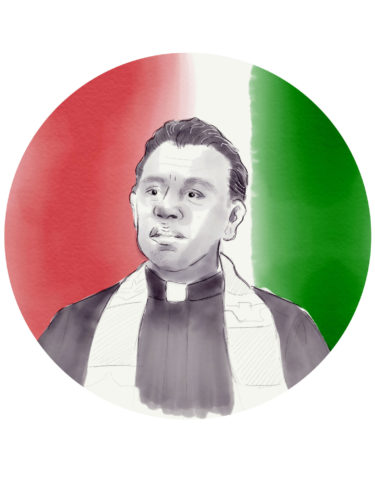
The response from Chicago’s Mexican-American community was similarly swift when news broke of the 7.1 magnitude earthquake that rocked Mexico City and the surrounding states of Mexico, Puebla, and Morelos in the early morning hours of September 19, killing over 360 people and injuring thousands more. Father José Sigfredo Landaverde, a Salvadoran-born immigrant rights activist and priest of the Faith, Life, and Hope Mission in West Chicago, began using social media to call for donations almost immediately after the earthquake, and donations of goods and money soon started to flood into the DuPage County church. On September 27, Landaverde left Chicago for the affected regions of Mexico with fifty-five volunteers and thirty semi-trailers—filled with 900 tons of donated food, water, and clothing—in tow, proudly declaring his cargo to be “the largest donation [of disaster relief supplies] in history by the Illinois immigrant community” on the Mission’s Facebook page. Landaverde documented on social media the transit, delivery, and distribution of the donations to earthquake victims in Mexico City and the states of Mexico, Puebla, Guerrero, and Morelos, as well as Oaxaca and Chiapas (which were struck by a separate 8.2 magnitude earthquake in early September). He emphasized that the relief efforts that he spearheaded were mano a mano—that is, relief supplies were placed directly into the hands of the people, rather than having their distribution slowed by bureaucratic inefficiency.
In the immediate aftermath of the quake, members of the Chicago Mexican community also rapidly organized a fundraising and coordination committee “Chicago con México” to streamline fundraising efforts and distribute collected donations to the American and Mexican Red Cross and other disaster relief NGOs working in Mexico. The committee evolved organically as a synthesis of community and political organizations, said Artemio Arreola, political director of the Illinois Coalition for Immigrant and Refugee Rights (ICIRR) and a member of the Chicago con México committee. Alfonso Seiva, another member of the committee and vice president of the Federación de Clubes Morelenses en Chicago, a cultural organization serving Mexican immigrants from Morelos, explained that the Federación has historically mobilized around immigration issues such as raising money to support the families of deported breadwinners. To Seiva, contributing to fundraising efforts for earthquake victims in Mexico (particularly in his home state of Morelos, which was hit especially hard by the earthquake) was a natural extension of that mission. By mid-October, said Arreola, Chicago con México had received enough donations to send another thirty trailers’ worth of supplies to the worst affected areas.
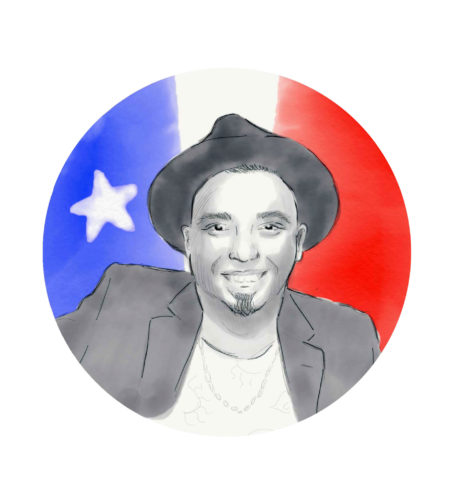
In the weeks following Hurricane Maria and the earthquakes in Mexico, spontaneous fundraising events for disaster relief efforts of all types—from DIY house shows to cultural festivals featuring Mexican cooking and Morelos-style traditional dancing—sprung up across Chicago. One such fundraising show for Mexico and Puerto Rico, featuring several local bands (Kelroy, Súbele, Maladicto) and singer Lester Rey as emcee, took place at the Dojo in Pilsen on October 13; another fundraiser followed in November.
“It’s beautiful when Mexico and Puerto Rico come together,” Rey said at the October performance, succinctly describing the feeling of the show which featured artists from both Chicago’s Mexican and Puerto Rican American communities.
Rey, who is Puerto Rican and still has family on the island, elaborated in an email on the need for solidarity between different Latinx groups both in terms of the recent natural disasters and the current political climate. “Sometimes misconceptions find their way into Latino communities to build animosity among different Latino ethnicities, which is very sad,” he said. However, he continued, “Since the disaster, I’ve seen more people supporting both communities. It is beautiful to see and more importantly [to] come together to raise funds for relief efforts, which are being poorly handled by the U.S. government.” Referencing the fact that dozens of volunteers with the Mexican Red Cross crossed the border in early September to provide aid to hurricane-ravaged Texas, Rey wrote, “When Irma and Harvey hit Houston, Mexico sent support but…[Trump] has threatened to pull aid from Puerto Rico.” He continued, “Trump continues to go after minorities and the more he does that, the more we will come together as one voice.”
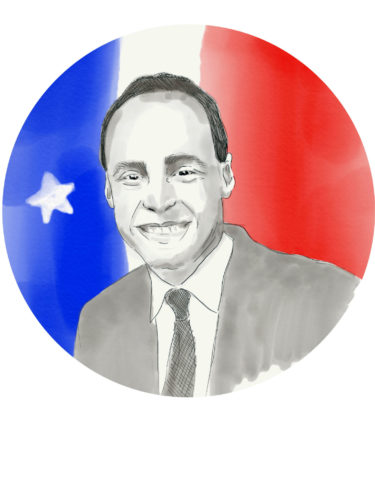
As the weeks after Maria have turned into months, the situation on the ground in Puerto Rico remains dire—even in late November, according to official estimates, only fifty percent of the island had access to electricity and hundreds of thousands of people still lacked clean drinking water. Meanwhile, in Chicago and in Washington, Gutiérrez established himself as a relentless critic of the failure of the federal response to the hurricane and one of Puerto Rico’s fiercest advocates on the mainland. According to Rivlin, Gutiérrez’s repeated trips to the island have allowed him to oversee the distribution of aid from the Chicago diaspora community, attempt to keep Washington and the American public focused on the crisis in Puerto Rico, and see the daily reality of life on the island “for his own eyes.” Rivlin said that Gutiérrez, who has visited the municipalities of Caguas, Toa Baja, Loíza, Comerio, Dorado, San Lorenzo, Cayey, Vega Alta, and Jayuya, among others, decided in part which areas of Puerto Rico to visit based on the requests of his constituents: “If you look at our Facebook [page]…there are thousands of comments saying, ‘Hey, you forgot about this town,’ or ‘You forgot about that town,’ or ‘Please go visit my relatives in such and such a place.’”
In November, Gutiérrez led the House Democratic Caucus in a “Day of Solidarity with Puerto Rico and the U.S. Virgin Islands”; spoke at the Unity March for Puerto Rico on the National Mall, which brought out thousands of demonstrators on November 19; and condemned the Trump administration’s callous reaction to the ongoing crisis on the House floor, which he has called “a stain on the reputation of the United States.” Addressing the House on November 8, Gutiérrez commended the response of Chicago’s Puerto Rican community to the crisis, contrasting their effort with the federal government’s insufficient response. “Individuals in Chicago are investing in the well-being of people in Loíza they have never met…The people of Chicago are getting help to the people of Puerto Rico before any official resources are coming to their rescue.” Puerto Ricans, continued Gutiérrez, are “finding ways to make do, just as the people of Chicago are making do by sending their own help in their own way…Life goes on, even when the government has turned their back on you.”
Here in Chicago, however, the grassroots and city efforts to help Puerto Ricans affected by Hurricane Maria have not been limited to airlifting supplies to the island and critiques of Washington’s response to the crisis. Rather, community organizations and city government officials have sought to make Chicago a destination for Puerto Ricans fleeing the hurricane’s devastation and ensure that hurricane refugees are made welcome—whether they intend to stay in Chicago for a few days, a few months, or permanently.
Listen to South Side Weekly reporter Henry Bacha discuss this story on the December 19 episode of SSW Radio, the Weekly’s radio hour on WHPK:
In early October, flanked by Gutiérrez and dozens of Latinx aldermen and city officials, Mayor Emanuel announced that Chicago would prepare to invite “tens of thousands” of Puerto Ricans to the city. Promising a sustained, committed effort to welcome hurricane evacuees from the island, Emanuel said that Chicago would “be living up to what it means to be a sanctuary city.” At the time of the press conference, an estimated 1,600 Puerto Ricans had already arrived in Chicago and 36th Ward Alderman Gilbert Villegas, leader of the City Council’s Latino Caucus, said that he expected Chicago’s Puerto Rican population to double in the coming months due to the exodus of Puerto Ricans fleeing to the mainland. That prediction hasn’t quite materialized, even though some 160,000 Puerto Ricans have left the island since the hurricane hit. Although central Florida and the greater New York City area have absorbed most of that migration, Villegas says that between ten and fifteen thousand Puerto Ricans had arrived in Chicago by late November. The mayor’s office reported only 1,600 as arriving on humanitarian flights in the weeks after the hurricane, but the true number of evacuee Puerto Ricans in the city is difficult to estimate— most of those who arrived have been staying with and relying on family members, without connecting to city resources; on the other hand some Puerto Ricans arrived in Chicago purely because Chicago was the only city on the mainland where they were able to find a flight to, and have since moved on to New York, Central Florida, California, or elsewhere.
Alderman Roberto Maldonado represents a large population of Puerto Ricans living in Humboldt Park, Hermosa, and Logan Square, and his 26th Ward has been at the heart of Chicago’s efforts to welcome Puerto Rican evacuees to the city. “I predicted when Maria hit Puerto Rico that there was going to be a massive migration” off of the island, recalled Maldonado. “I started to prepare here through the [city’s Office of Emergency Management and Communications] in the event that we would start to see a flow of migration into Chicago.” According to Maldonado, a few weeks after the storm, recently arrived Puerto Ricans began appearing in his Humboldt Park office seeking food and housing assistance, help in navigating the FEMA claim process, and to enroll their children in school. Even on a Monday afternoon in mid-November, there was a man from Puerto Rico inquiring about such services. The office staff directed him to the Hurricane Resource Center, which opened November 2 at the Humboldt Park field house and will be staffed at least two days a week until January 2.
Although managed by the OEMC, the Center operates in collaboration with local community groups, including the Puerto Rican Agenda, and private charities such as the Salvation Army and Catholic Charities. Maldonado says that the Center offers newly arrived Puerto Ricans access to a variety of resources to aid in their resettlement and transition to life in Chicago, among them the city’s Department of Family Services, emergency food assistance, winter coats and clothing, Chicago Public Schools, FEMA, and the Chicago Housing Authority. Children from the island are being enrolled “left and right” in CPS, Maldonado said—according to CPS, by early December, approximately 169 Puerto Rican evacuees had already been placed in classes. Teachers who fled Puerto Rico are being invited to work as substitutes in city schools to help accommodate the needs of evacuee children for a bilingual education, Maldonado said; the state has created an expedited licensing process for them. Although he believes that the conditions in Puerto Rico will prevent people’s return for the foreseeable future, he expressed optimism that Chicago will continue to support and provide for Puerto Rican refugees for as long as necessary. In Chicago, “People are truly feeling welcome,” Maldonado said. “There is so much we can do for the people who are coming here.”
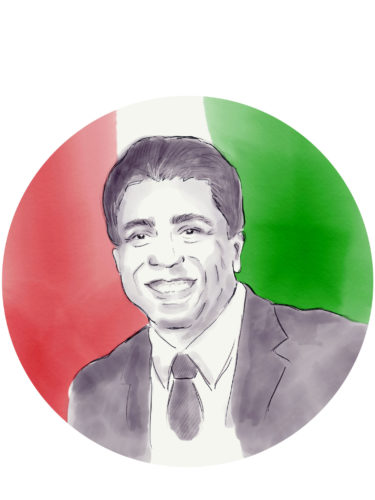
Alderman Danny Solís, whose 25th Ward includes parts of Pilsen, Chinatown, and University Village, calls Chicago “the most American city in the United States.” Solís, who was born in Monterrey, Mexico and immigrated to Chicago as a child, says that Chicago’s efforts to help Mexico and Puerto Rico, particularly with regard to the resettlement of hurricane evacuees, is representative of the city’s long “tradition of being a welcoming city for immigrants.” Calling Emanuel “a tremendous advocate for the immigrant community in general,” Solís commended the continuing efforts of the city government to accommodate hurricane refugees and their commitment to fundraising for disaster relief efforts in Puerto Rico and Mexico. Over the past two months, hundreds of thousands of dollars have been donated through a city website that features dozens of charities and organizations working in hurricane and earthquake relief.
Through these disaster relief efforts, city officials and the mayor have reframed what it means to be a “sanctuary city”—not just a place where undocumented residents can live and prosper without fear of deportation, but also a place where victims of disaster can find shelter. But Chicago’s commitment to the original definition—protecting undocumented residents—and its pro-immigrant reputation have their critics. Despite the city’s Welcoming Ordinance, Chicago agencies can still cooperate in the arrest, detention, or deportation of undocumented residents under certain exceptions: for example, if they are included in the Chicago police’s gang database. The database is notoriously opaque and critics say it targets Black and Latino men based on where they live or who lives around them. The city recently paid a settlement to a Latinx immigrant who was mistakenly placed in the database, arrested, and may be deported. Advocates for immigrants and refugees, including the ICIRR and Organized Communities against Deportations, have called for the city to remove the exceptions entirely.
Nevertheless, the response of Chicago’s communities and city officials to the crises in Mexico and Puerto Rico is a testament to the aspiration of the sanctuary city and to the strength of the greatest parts of the city’s identity as not only the center of the Mexican and Puerto Rican American communities in the Midwest but also as a place that welcomes and extends compassion to people from all over the world. As the current presidential administration largely ignores the pleas of Latinx people in disaster-stricken areas, the unified front presented by Chicago’s Latinx communities in response to Hurricane Maria and the Mexican earthquake is a powerful rebuke of the administration’s rhetoric and policy. And in some ways, the crises in Puerto Rico and Mexico have given leaders in Chicago an opportunity to further cement their stance in opposition to that anti-immigrant agenda. The disasters in Puerto Rico and Mexico have given Chicago the chance to truly “[live] up to what it means to be a sanctuary city,” as Mayor Emanuel said at the October press conference—to turn rhetoric into action and political posturing into relief for people and communities in need.
Support community journalism by donating to South Side Weekly

